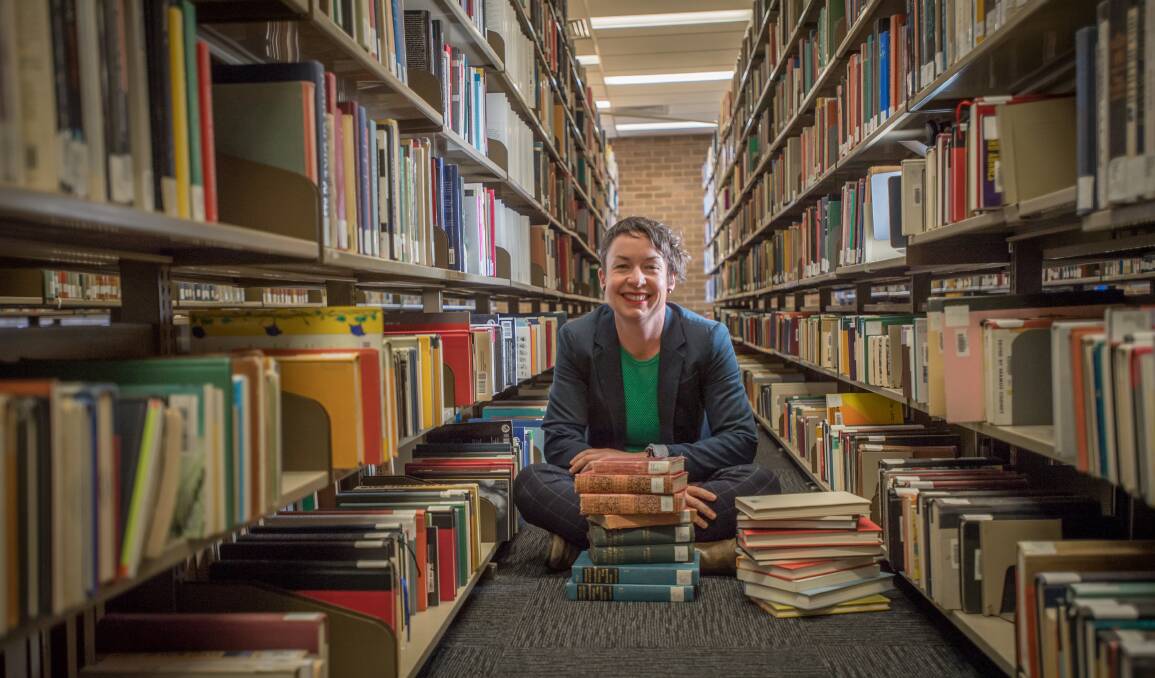There was an age when men happily read romances in droves and women took political thrillers home with them after regular visits to the library, with Australian writers positioned alongside their British counterparts.
Subscribe now for unlimited access.
$0/
(min cost $0)
or signup to continue reading
It's one of the surprising findings from the Australian Common Reader project, which has made old Australian library records accessible in a revamped database.

The project, which has been relaunched by the Australian National University, is the largest database of library loan records in the world, revealing the reading habits of members from six libraries between 1861 and 1928.
The ANU's School of Literature, Languages and Linguistics' Julieanne Lamond, who has taken on the project, said it's hard to find evidence of what people actually read through history.
"This is a really precious resource in that ... we can actually think about what books were circulating in these particular times and places [and] what kind of impact might they have had on the people who were living there," she said.
Dr Lamond said that the contemporary publishing industry could be like a toy shop, with books for men and books for women clearly marked and advertised.
"What these records show is that this was not the case in the late 19th and early 20th century," Dr Lamond said.
"Our reading culture might be more gendered now than it was in this period. This was a period of really wide reading and this was a working class reading as well, which is pretty interesting."
The library records have been drawn from mechanics' institute libraries in New South Wales, South Australia, Victoria and Western Australia.
"There weren't public libraries in Australia until the late-1940s, so this is pre-public library revolution.
"To become part of a library, you had to pay. These were the cheap ones. These were set up often by companies really to try and keep their workers under control, to give them something useful to do instead of drinking and causing ruckus," Dr Lamond said.
"They wanted them to read non-fiction. They wanted them to read historical and philosophical and agricultural works. But really, the vast majority of [the workers'] reading was very light fiction."
John Pellew, a miner in Port Germein, South Australia, made 877 loans in the decade to 1907, which was about seven books a month.
TOP FIVE BOOKS BORROWED BY WOMEN
- On the Wings of the Wind by Allen Raine
- A Welsh Witch by Allen Raine
- Brothers: The True History of a Fight Against Odds by Horace Annesley Vachell
- Within the Maze by Ellen Wood
- The Gambler by Katherine Cecil Thurston
TOP FIVE BOOKS BORROWED BY MEN
- Household Words magazine
- New Monthly Magazine
- What Will He Do with It? by Edward Bulwer-Lytton
- Bentley's Miscellany magazine
- Tales from 'Blackwood' by H. Chalmers Roberts
Although it is now easy to make distinctions between Australian and British literature, readers in these libraries would have seen them side by side, Dr Lamond said. Miles Franklin and Henry Lawson were borrowed alongside H. Rider Haggard and George Eliot.
"When we look at it now, we're thinking about Australian literature over here and British literature over there. But for these readers, it's sitting side by side on these library shelves.
"They were reading them one after the other, so it really gives us a new sense of Australian literature and how it was positioned within this broader literary culture," she said.
The database, first established by Tim Dolin at Curtin University in 2008, showed some reading habits haven't changed, with crime novels and thrillers well represented in the records.
"These kinds of genres that are still really popular were really popular back then," Dr Lamond said.


